|
|
| Übersicht – Contents: | |
Diese Seite ist Teil des Projektes
|
|
| Übersicht – Contents: | |
Flagge – Flag: |
|
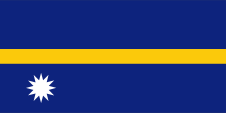 |
Nationalflagge – national flag,   |
historische Flaggen – historical Flags: |
|
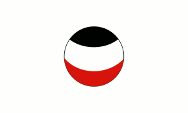 |
1888–1906, Flagge der Jaluit-Gesellschaft – flag of the Jaluit Company, Quelle/Source, nach/by: Wikipedia (DE) |
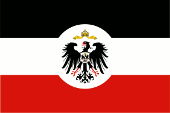 |
1888–1914, Deutsches Reich – German Empire, Dienstflagge Kolonialamt – official flag of Colonial Office, Seitenverhältnis – ratio = 2:3, Quelle/Source, nach/by: Flags of the World    |
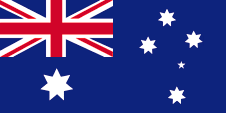 |
1920–1942, 1945–1968, Flagge Australiens – flag of Australia, Seitenverhältnis – ratio = 1:2, Quelle/Source nach/by: Flags of the World |
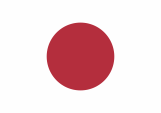 |
1942–1945, Flagge Japans – flag of Japan, Seitenverhältnis – ratio = 7:10, Quelle/Source, nach/by: Wikipedia (EN) |
| Die am 31.01.1968 (Tag der Erlangung der Unabhängigkeit) eingeführte Flagge zeigt auf blauem Feld einen waagerechten gelben Streifen in der Mitte, sowie im linken unteren Bereich einen zwölfstrahligen weißen Stern. Die Flagge veranschaulicht so die geographische Lage des Inselstaats. Er liegt dicht unter dem Äquator und westlich der internationalen Datumsgrenze. Der zwölfstrahlige weiße Stern steht für die zwölf Stämme von Nauru, von denen jedoch zwei inzwischen ausgestorben sind. Die Farben der Flagge scheinen heute folgendermaßen definiert zu sein, und zwar: Blau = Pantone 280, Gelb = Pantone 123. | The on
31st of January in 1968 (day of the attainment of independence) introduced
flag shows on a blue field a horizontal yellow stripe in the middle, as well
in the left lower half a twelve-pointed white star. The flag expresses in this way the geographic position of the state. It is situated closely underneath the equator and western of the international date-line. The twelve-pointed white star stands for the twelve tribes of Nauru, but meanwhile two out of them are extincted. The colours of the flag seem to be defined today as follows: blue = Pantone 280, yellow = Pantone 123. |
| Quelle/Source: Flaggen Wappen Hymnen, Wikipedia (D) | |
Wappen – Coat of Arms: |
|
 |
Wappen von Nauru – coat of arms of Nauru, Quelle/Source, nach/by: Princeaus, Public domain, via Wikimedia Commons |
| Das Staatswappen von Nauru zeigt auf einem von Palmwedeln umgebenen Schild in der oberen Hälfte das alte alchemistische Symbol für Phosphor, Phosphate waren der wirtschaftliche Reichtum des Landes. In der unteren Hälfte ein Fregattvogel und ein Zweig Tomanoblüten. Über dem Schild, unter einem Band mit dem Namen des Landes, erscheint der zwölf-strahlige Stern, die zwölf Stämme von Nauru symbolisierend. Unterhalb des Wappenschildes erscheint ein Spruchband mit dem Motto des Landes: "Gods will first" → "Gottes Wille zuerst". |
The coat of arms of Nauru
shows on a by palm-tree-whisks surrounded shield the old alchemic symbol for
phosphorus in the top half, phosphates were the economic wealth of the land.
In the lower half a frigate-bird and a twig of Tomano blossoms. Above the shield, under a band with the name of the country, appears the twelve-pointed star, symbolising the twelve tribes of Nauru. Below the shield appears a banner with the country's motto: "Gods will first". |
| Quelle/Source: Flaggen Wappen Hymnen, Wikipedia (D) | |
Landkarte – Map: |
Lage – Position: |
Landkarte des Landes – Map of the Country: |
|
|
| Zahlen und Fakten – Numbers and Facts: | |
|
|
|
|
|
|
|
|
|
|
|
|
|
|
|
|
| 1798 ·
Entdeckung der von Polynesiern bewohnten Insel, anschließend vereinzelte
private Kolonisierung durch Briten 1830 · Briten siedeln sich an 1878 · Beginn eines Stammeskrieges der einem Drittel der Bevölkerung das Leben kosten wird 1886 · Abkommen von Berlin, das Deutsche Reich und Großbritannien regeln die Aufteilung ihrer Interessensphären im Westpazifik, Nauru wird deutsches Interessengebiet 02.10.1888 · das Deutsche Reich errichtet sein Protektorat über Nauru und beendet den Stammeskrieg, Nauru wird den Marshallinseln angeschlossen, die Verwaltung vor Ort wird von der Deutschen Jaluit-Gesellschaft wahrgenommen 1899 · Beginn der christlichen Missionierung 1906 · die Marshall-Inseln (einschl. Nauru) werden als Bezirk Jap an die Kolonie Deutsch-Neuguinea angeschlossen 1914 · Erster Weltkrieg, britische und australische Truppen besetzen Kaiser-Wilhelm-Land 1920 · Versailler Diktat, das Deutsche Reich verliert alle seine Kolonien, die Insel Nauru wird (wie ganz Kaiser-Wilhelm-Land) ein Mandatsgebiet des Völkerbundes unter australischem Mandat 1942–45 · Zweiter Weltkrieg, Besetzung durch japanische Truppen 1945 · Australien besetzt Nauru erneut 1947 · die Mandatsverwaltung des Völkerbundes endet, Nauru wird als UNO-Treuhandgebiet von Australien weiter verwaltet 31.01.1968 · Unabhängigkeit 01.05.1999 · Nauru wird Vollmitglied des Commonwealth of Nations |
| 1798 ·
dicovery of the by Polynesians inhabited Island, in the following years
occasional private colonization by the British 1830 · British settle 1878 · start of a tribal war that will cost the lives of a third of the population 1886 · Treaty of Berlin, the German Empire and United Kingdom settle the division of their spheres of interest in the Western Pacific, Nauru becomes a German area of interest 2nd of October 1888 · the German Empire establishes its protectorate over Nauru and ends the tribal war, Nauru becomes part of the Marshall-Islands, the local administration is carried out by the German Jaluit Society 1899 · start of the Christian Mission 1906 · the Marshall Islands (incl. Nauru) become affiliated as District of Jap with the colony of German New Guinea 1914 · First World War, British and Australian troops occupy Kaiser-Wilhelm-Land 1920 · Versailles Dictate, the German Empire loses all its colonies, Nauru (like the whole Kaiser-Wilhelm-Land) becomes a Mandate Territory of the League of Nations under Australian mandate 1942–45 · Second World War, occupation by Japanese troops 1945 · Australia occupys Nauru again 1947 · the mandate's administration of the League of Nations ends, Nauru gets further administrated as a Trust Territory of the UN by Australia 31st of January 1968 · independence 1st of May 1999 · Nauru becomes a full member of the Commonwealth of Nations |
| Quelle/Source: Atlas zur Geschichte, World Statesmen, Wikipedia (D) |
| Die Herkunft des Wortes "Nauru" ist nicht geklärt. Die Nauruer nannten ihre Insel damals wie heute "Naoero". Das Wort "Nauru" wurde später aus "Naoero" geschaffen, damit Europäer und Amerikaner den Namen der Insel richtig aussprechen können. Die Insel hatte auch weitere Namen: Die englischen Kolonialisten vor 1888 nannten die Insel "Pleasant Island" oder "Shank Island", die deutschen Kolonialherrscher "Nawodo" oder "Onawero". | The
origin of the word "Nauru" is unknown. The Nauruans name their island then
like today "Naoero". The word "Nauru" was later created out of "Naoero", to
facilitate the speaking of the name of the island for Europeans and
Americans. The island had further names in the past: the English colonists before 1888 named it "Pleasant Island" or "Shank Island", the German colonial sovereigns "Nawodo" or "Onawero". |
| Quelle/Source: Wikipedia (D) | |